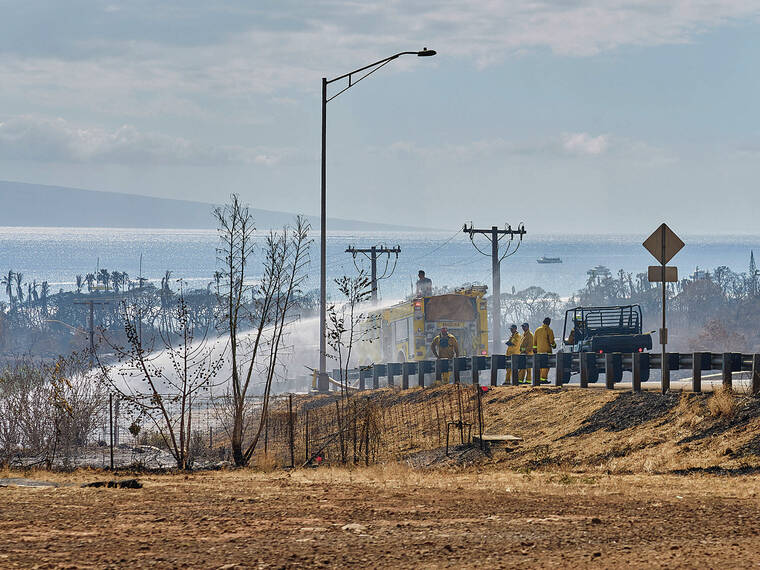Kapu aloha protest strategy spreads, causing alarm
New protests aimed at the Kahuku windmill project and the Sherwood Forest park development may be alarming to some state leaders, but among some activists there is a sense that a grassroots momentum has been building as the nonviolent protest strategy known as kapu aloha spreads from one community to the next.
Since the middle of this summer, authorities on Oahu and Hawaii island have found themselves facing activists who were attempting to block construction of the Thirty Meter Telescope on Mauna Kea, a multipurpose field and playground in Waimanalo, and, as of Sunday, a wind farm project slated for development in Kahuku.
The nonviolent protests all used a disciplined approach to civil disobedience that was pioneered on Mauna Kea. Law enforcement officials arrested 39 people for obstructing Mauna Kea Access Road on July 17, and arrested 28 people in the Waimanalo protest Sept. 26.
The recent protests have tapped into a powerful political current. Thousands of TMT opponents have massed on Mauna Kea Access Road at times, and police estimate 12,000 to 15,000 people marched through Waikiki on Oct. 5 in support of the protests on the mountain. Opponents of both the Waimanalo and the Kahuku projects joined in that march.
The TMT and Waimanalo park projects are both stalled for the time being, and it is unclear what impact the protests this week might have on the North Shore wind farm.
All this is troubling to political leaders such as House Speaker Scott Saiki, who said Monday that when proper permits for a development are in place, “then they need to mean something. If a permit is approved, then the permit holder has the right to proceed, and government needs to facilitate that because government issued the permits.”
Don't miss out on what's happening!
Stay in touch with breaking news, as it happens, conveniently in your email inbox. It's FREE!
“This is a big concern for the entire state, which is whether the rule of law still applies here,” said Saiki, a Democrat who is also a lawyer. “Assuming that these projects are permitted, then they should advance.”
At the protest camp on Mauna Kea, opponents of the $1.4 billion telescope watched livestreamed social media video of the arrests in Waimanalo as they happened last month, and heard the Oahu protesters using chants they had learned during their visits to the anti-TMT protests on Hawaii island.
Noe Noe Wong-Wilson, one of the Mauna Kea protest leaders, said she does not know all the details of the Waimanalo dispute, but she has family members who were arrested at the Sherwood protests. “The way that we take our stand on the mauna is something that our entire Hawaiian community is watching and learning from, and that’s what I see,” she said.
The media published accounts of people in Waimanalo saying kind and loving things to the officers who were arresting them, and “that’s beautiful,” she said. “That makes someone pause, and we hope that not only the individual policemen will pause and reflect on what they’re doing, but that their superiors will as well.”
“I don’t think kapu aloha is in anybody’s law enforcement playbook, and I don’t think they really understand how to cope with that kind of stance, a very peaceful and loving stance,” Wong- Wilson said.
Saiki said the new outbreak of protests has been in the making for decades and that government needs to respond. He said the protests are a sign that Hawaii’s land and cultural management practices need to be reformed for both the public and private sector.
“I’m sure that along the way, especially when the process is protracted, and it’s not easy to navigate, then people do not have the opportunity to voice their concerns, and that is an area that needs to be addressed and improved,” he said.
When asked whether the public should expect more nonviolent resistance, Wong-Wilson replied, “I can’t answer that. It’s up to each community how they want to deal with their struggles, but I know there are similar issues throughout Hawaii, in all the communities.”
“In many communities the local families are struggling with their ability to have a say in what happens to their land, and I wouldn’t be surprised if our lahui (nation) or our Hawaiian community continues to take lessons from what they learned on the mauna,” she said.




